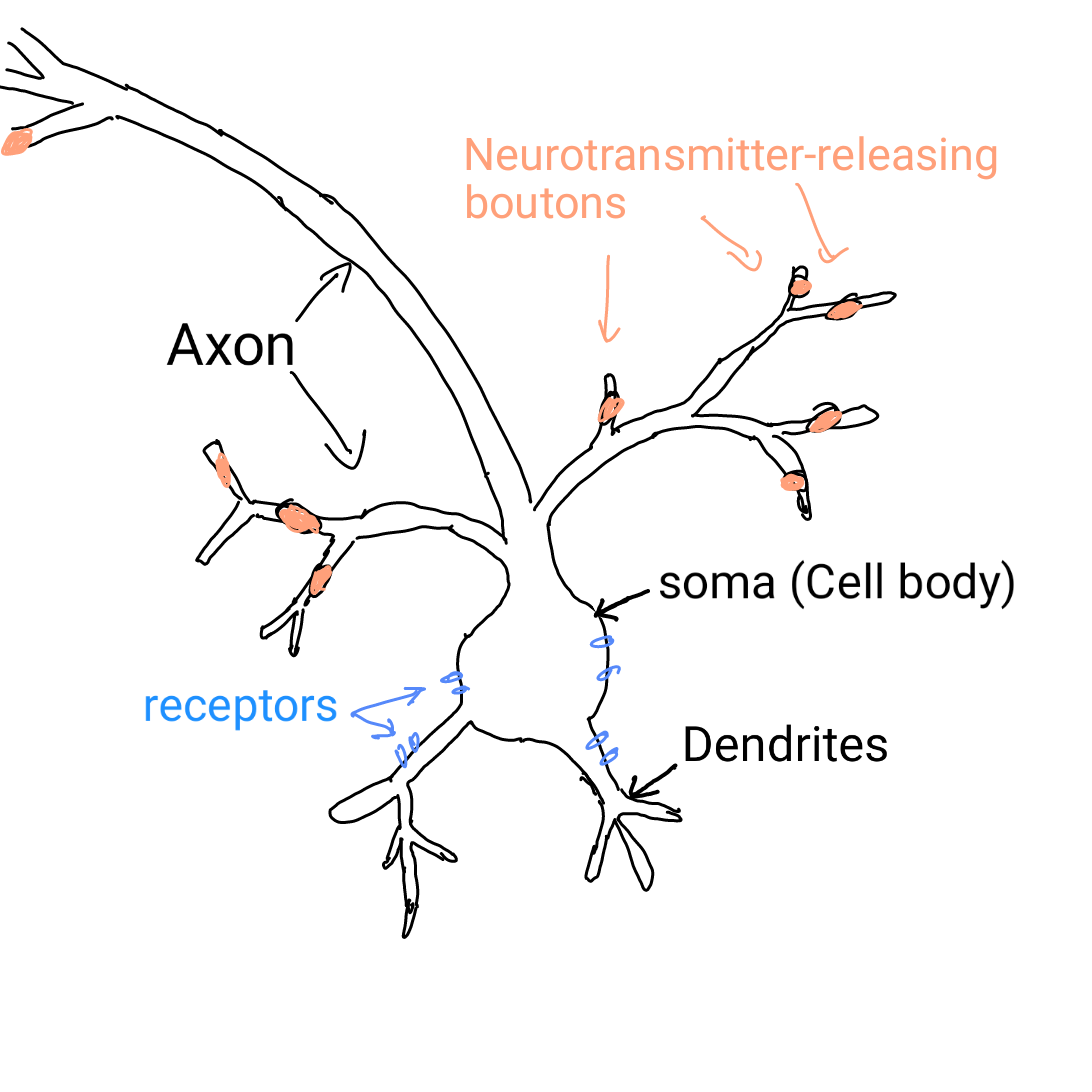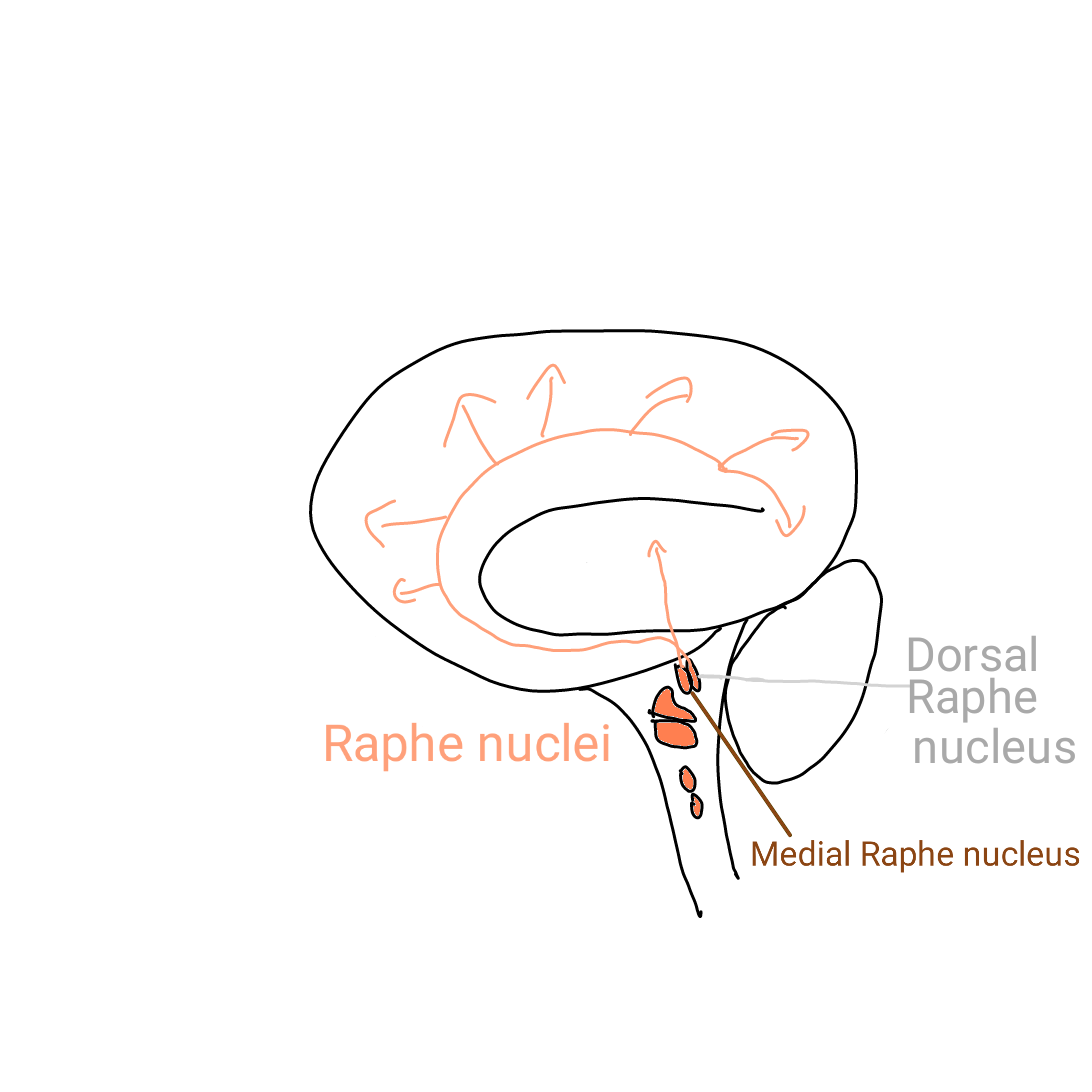neurotransmission-of-serotonin
Let's start with the basic neuroscience of serotonin, which you'll need to keep up with the rest here.
Neurotransmitters are molecules used by neurons to send signals to each other: Serotonin is one of them, you have probably also heard of dopamine, endorphin, and adrenaline, these are also neurotransmitters. Neurotransmitters like serotonin are released from neurons (aka nerve cells). Mostly, this release comes from their axons, huge branching structures which may extend to locations very far removed from the actual body of the cell.

When a neuron is activated it fires an electrical signal called an action potential which travels along the axon and causes it to release neurotransmitters.
The neurons which release serotonin are located in few regions of the brain called raphe nuclei. Each nucleus has axons which target different parts of the brain. One of these, the Dorsal Raphe Nucleus (DRN), has axons that extend all the way to the most distant parts of the brain, the cortex. It is particularly relevant in later entries here, remember it. Also remember its neighbor, the Medial Raphe Nucleus which targets different regions of the brain, and seems to have something of an opposing purpose with the DRN.

Neurotransmitters interact with cells by reacting with proteins on the cell's outside, called receptors. What the neurotransmitter does to the cell depends on the specific type of receptor. Some receptors directly increase or decrease the activity of a cell, called excitation and inhibition. Many receptors instead interact with proteins inside the cell, and have more subtle, less well understood effects.
Different neurons in different parts of the brain will have different receptors, and so different neurons will respond in different ways to the presence of serotonin. Since the chemical name for serotonin is 5-hydroxytryptamine, serotonin receptors are named with the abbreviation 5HT. They are grouped into 7 numbered families 5HT1 to 5HT7 based on their chemical properties. Each family contains several subtypes usually denoted by a letter (e.g. 5HT1A, 5HT1B).
In summary:
- Serotonin is released by cells in the raphe nuclei
- when these cells are activated they release it to various parts of the brain
- 5HT receptors respond to serotonin
- different kinds of 5HT receptors have different effects
- different cells will have different kinds of receptors
